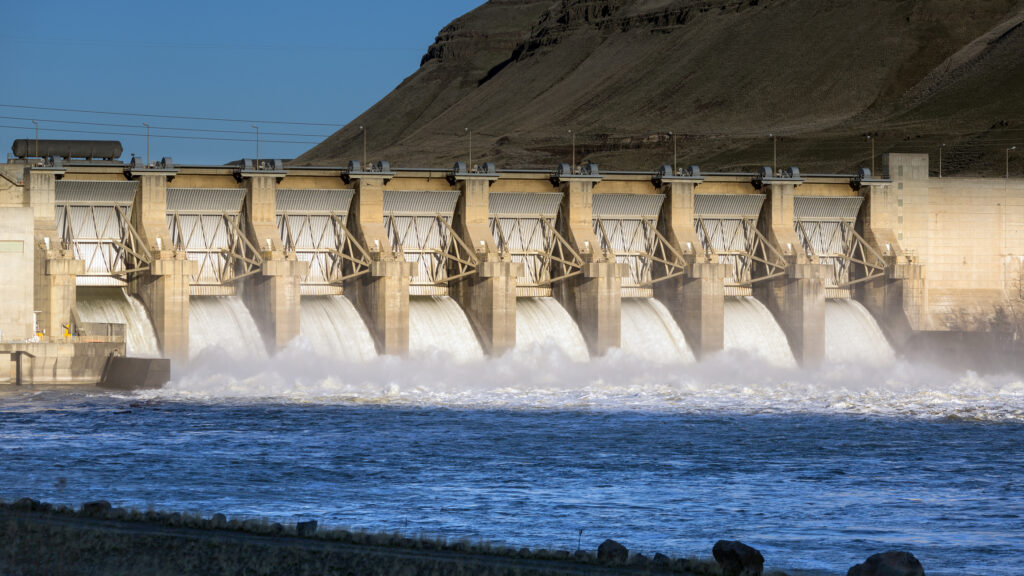The Lower Monumental Dam is on the Snake River in Washington state. (Getty Images)
Persistent drought in the West over the last two decades has limited the amount of electricity that hydropower dams can generate, costing the industry and the region billions of dollars in revenue.
The sector lost about 300 million megawatt hours of power generation between 2003 and 2020 due to drought and low water compared with the long-term average, researchers from the University of Alabama found. That equals about $28 billion in lost revenue. Half of the drop in power generation was due to drought in Oregon, Washington and California, which produce half the hydropower generated in the U.S.
The researchers published their findings July 23 in the journal Environmental Research Letters.
The three states have been the most affected financially and environmentally by the decline in power production. Economic losses in California were estimated to be more than $8.7 billion, and in Washington more than $4 billion. In Oregon, the hydroelectricity sector is estimated to have lost more than $1.5 billion in revenue over those 18 years.
When there isn’t enough hydropower available, utilities are forced to purchase energy from fossil fuel producers, mostly from natural gas companies, that drive up emissions. The purchase of gas-powered electricity to supplement a lack of hydropower drove carbon dioxide emissions up 10% over the 18 years, the study found.
New study says climate change behind drop in Northern Hemisphere snowpack
To reach their conclusions, the researchers analyzed stream flows from hydro-generating facilities across the U.S. from 2003 to 2023, and compared them with drought maps over that same period. They noted that droughts in the Western states were more severe and more frequent than in other parts of the U.S., causing the most significant losses.
Hydropower electricity from Oregon and Washington dams fell to historically low levels last year. Both Oregon and Washington generated 20% less hydropower in 2023 than in 2021. The U.S. Energy Information Administration attributed this to low precipitation in the fall and winter, and the May 2023 “heat dome” that drove regional temperatures up 30 degrees above average and rapidly melted snowpack in the region, which traditionally feeds rivers and streams steadily throughout the summer. Experts at the federal agency predict that hydropower generation across the West for 2024 will decrease 12% from 2023, leading to more historic lows.
Oregon Capital Chronicle, like the Idaho Capital Sun, is part of States Newsroom, a nonprofit news network supported by grants and a coalition of donors as a 501c(3) public charity. Oregon Capital Chronicle maintains editorial independence. Contact Editor Lynne Terry for questions: info@oregoncapitalchronicle.com. Follow Oregon Capital Chronicle on Facebook and X.
GET THE MORNING HEADLINES DELIVERED TO YOUR INBOX

